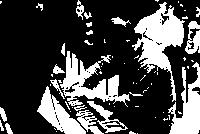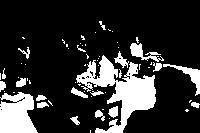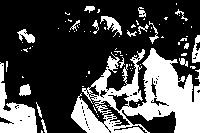
As soon as historical keyboardist Henry Lebedinsky began playing the clavichord, his small audience sitting on nearby chairs leaned in to listen. The clavichord produces soft, delicate and expressive music, a surprise for those accustomed to the more forthright piano. Through the 16th, 17th and 18th centuries, the clavichord was commonly found in people’s living rooms, salons or even bedrooms, Lebedinsky explained, because its quiet notes were suited for intimate spaces.
Lebedinsky, who graduated from Bowdoin in 1997, was giving a pre-performance talk and demonstration on the clavichord in Studzinski Recital Hall before his evening performance last Friday. His concert was one of a series of keyboard performances at Bowdoin this semester that will culminate with the Bowdoin Klavierfest, April 12-14.
Lebedinsky spoke about the instrument’s history and explained how the clavichord eventually came to be overshadowed by the piano. He also showed the best way to make music with a clavichord: rather than pound out chords, you roll them, pushing firmly down through the keys. He invited audience members to try out the black-keyed instrument, which led to several impromptu performances.
(After the jump are photos and five short, edited audio clips from the talk, one of which includes both Levedinsky and student Allen Wong Yu ’14 playing two different pieces.)
Listen to Lebedinsky’s introduction to the clavichord



